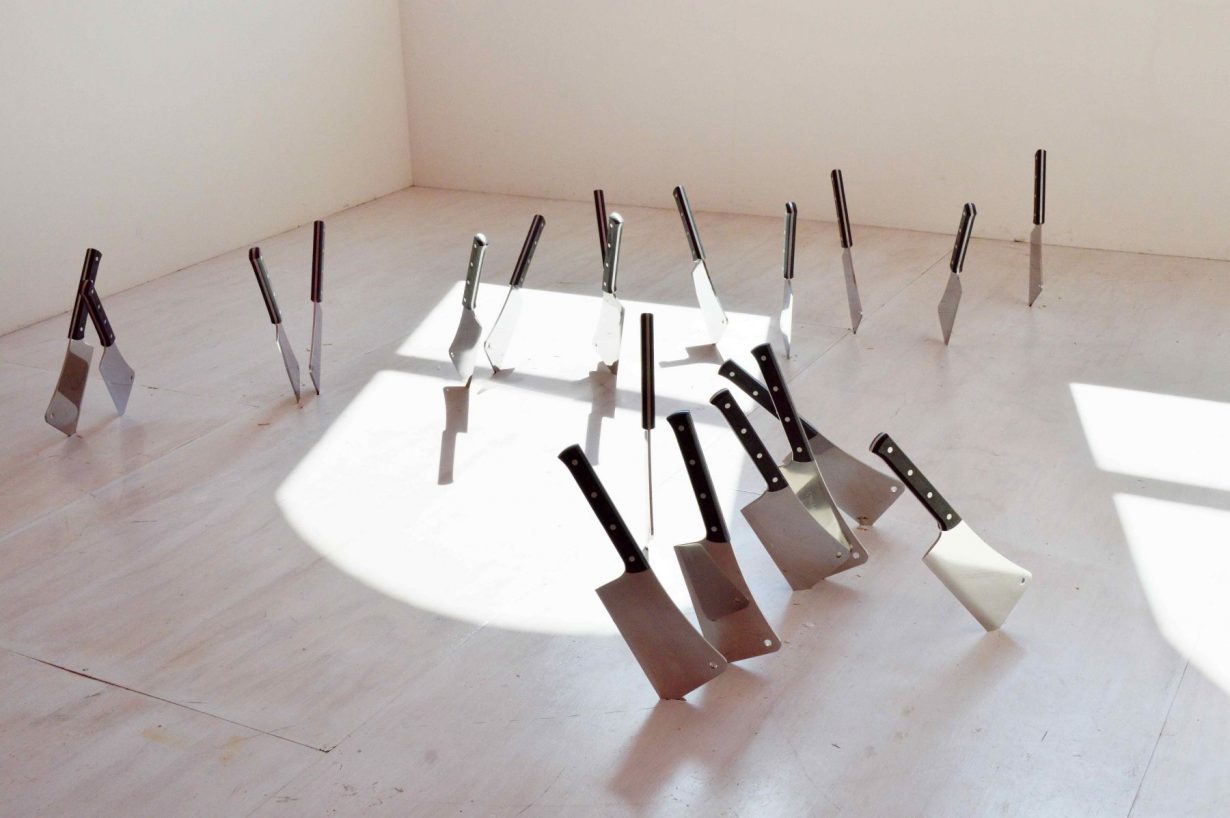Barry La Va, a pioneer of Process art, has died. The American artist was at the forefront of the movement in the 1960s that sought to shift the viewer’s focus from the end product to the actions the artist took to arrive at a work.
In one early sculpture, Untitled (Cleavers) (1969), La Va drove two meat cleaver into the walls of the gallery, an action he said showed the ‘evidence’ of his practice, not least through the violence of the act. It was a sculpture the artist would return to, in different permeations, throughout his career.

His earlier large-scale installations, created in 1967 and 1968, featured pieces of felt, ball bearings and wooden planks seemingly randomly strewn across the gallery floor. His work was often ephemeral: at the 1969 group-show, Anti-Illusion: Procedure/Materials at the Whitney Museum of American Art, which also featured Lynda Benglis, Eva Hesse, Robert Morris, Bruce Nauman, Richard Serra and Keith Sonnier, Le Va blew flour across the museum floor. For the same institution in the same year, he created a sound installation, a recording of the noise created while repeatedly running head long into the walls of a corridor.
Le Va was born in 1941 in Long Beach, California and in his youth he was greatly interested in cartoons, architecture and the artwork of architect Frank Lloyd Wright, Swedish artist Öyvind Fahlström and Chilean painter Roberto Matta as well as detective stories, all which would influence his work later in his career. He attended California State University from 1960 to 1963, continuing his studies at Los Angeles College of Art & Design and the Otis Art Institute of LA County, where he received a Master of Fine Arts in 1967.
In 1972 curator Harald Szeemann invited him to participate in Documenta for the first time, and La Va subsequently returned to Kassel in 1977 and 1982. Survey shows have been held at the New Museum, New York (1978–79); Rijksmuseum Kröller-Müller, Otterlo, The Netherlands (1988); Carnegie Mellon Art Gallery, Pittsburgh (1988), Staatliche Graphische Sammlung, Munich (1993); Institute of Contemporary Art, Philadelphia (2005) and the Serralves Museum, Porto (2006)